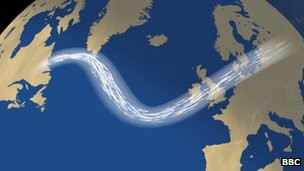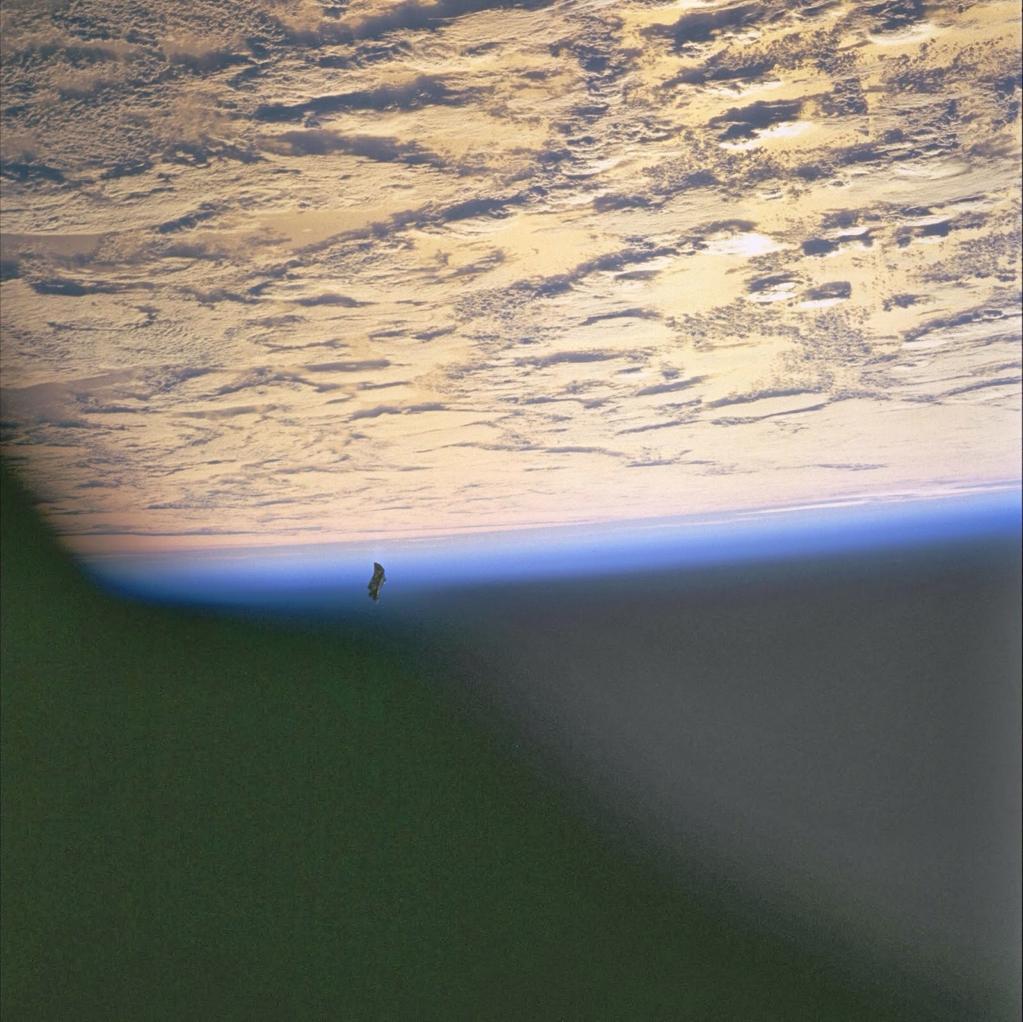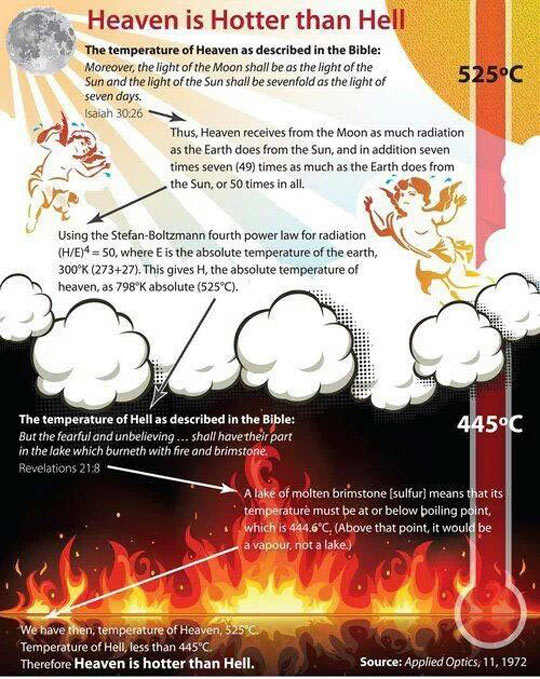-
SCAM WARNING! See how this scam works in Classifieds.
You are using an out of date browser. It may not display this or other websites correctly.
You should upgrade or use an alternative browser.
You should upgrade or use an alternative browser.
Science and Souls (for geeks and spiritual explorers)
- Thread starter Bob Loblaw
- Start date
grokit
well-worn member
Unusual Coral Reef Thrives in Acidified Waters

The growing acidity of the world's oceans is a worrying threat to coral reefs, which support an amazing array of marine life, and are generally harmed as ocean acidity rises. But a vibrant reef in the western Pacific Ocean is bucking this trend: Researchers have found that the coral there thrives, rather than suffers, in locally acidic conditions. ...


The growing acidity of the world's oceans is a worrying threat to coral reefs, which support an amazing array of marine life, and are generally harmed as ocean acidity rises. But a vibrant reef in the western Pacific Ocean is bucking this trend: Researchers have found that the coral there thrives, rather than suffers, in locally acidic conditions. ...

Frederick McGuire
Aggressively Loungey
Nooky72
Dog Marley
BRILLIANT STAR WARS TRIPTYCH ARTWORK
22 Jan 2014
Triptych art is a form usually reserved for religious scenes, panels to be hung in places of reverential worship. We're surprised no one has made a Star Wars series sooner.
This superb Star Wars fanboy iconography is the work of illustrator and artist Marko Manev. Having already treated Lord of the Rings to a similar worship, his Star Wars panels focus on key vehicles, the iconic lightsabre battles and the symbol of the ultimate victors for each of the original trilogy's three films.



22 Jan 2014
Triptych art is a form usually reserved for religious scenes, panels to be hung in places of reverential worship. We're surprised no one has made a Star Wars series sooner.
This superb Star Wars fanboy iconography is the work of illustrator and artist Marko Manev. Having already treated Lord of the Rings to a similar worship, his Star Wars panels focus on key vehicles, the iconic lightsabre battles and the symbol of the ultimate victors for each of the original trilogy's three films.



t-dub
Vapor Sloth
ok, so peeps in Vancouver had the Russians mount some HD cameras on the International Space Station (ISS) and it will be streamed near-live, for free. One is a positional high rez camera which should be really interesting, I requested a beta invite for sure . . . 
http://www.urthecast.com/

http://www.urthecast.com/
Enchantre
Oil Painter
Do I get unlimited Data with that Android phone?

grokit
well-worn member
ANU astronomers discover oldest star

(L to R) lead researcher Dr Stefan Keller and team member Professor Mike Bessell.
Photo by David Paterson, ANU
A team led by astronomers at The Australian National University has discovered the oldest known star in the Universe, which formed shortly after the Big Bang 13.7 billion years ago.
The discovery has allowed astronomers for the first time to study the chemistry of the first stars, giving scientists a clearer idea of what the Universe was like in its infancy.
“This is the first time that we’ve been able to unambiguously say that we’ve found the chemical fingerprint of a first star,” said lead researcher, Dr Stefan Keller of the ANU Research School of Astronomy and Astrophysics.
“This is one of the first steps in understanding what those first stars were like. What this star has enabled us to do is record the fingerprint of those first stars.”
The star was discovered using the ANU SkyMapper telescope at the Siding Spring Observatory, which is searching for ancient stars as it conducts a five-year project to produce the first digital map the southern sky.
The ancient star is around 6,000 light years from Earth, which Dr Keller says is relatively close in astronomical terms. It is one of the 60 million stars photographed by SkyMapper in its first year.
“The stars we are finding number one in a million,” says team member Professor Mike Bessell, who worked with Keller on the research.
“Finding such needles in a haystack is possible thanks to the ANU SkyMapper telescope that is unique in its ability to find stars with low iron from their colour.”
Dr Keller and Professor Bessell confirmed the discovery using the Magellan telescope in Chile.
The composition of the newly discovered star shows it formed in the wake of a primordial star, which had a mass 60 times that of our Sun.
“To make a star like our Sun, you take the basic ingredients of hydrogen and helium from the Big Bang and add an enormous amount of iron – the equivalent of about 1,000 times the Earth’s mass,” Dr Keller says.
“To make this ancient star, you need no more than an Australia-sized asteroid of iron and lots of carbon. It’s a very different recipe that tells us a lot about the nature of the first stars and how they died.”
Dr Keller says it was previously thought that primordial stars died in extremely violent explosions which polluted huge volumes of space with iron. But the ancient star shows signs of pollution with lighter elements such as carbon and magnesium, and no sign of pollution with iron.
“This indicates the primordial star’s supernova explosion was of surprisingly low energy. Although sufficient to disintegrate the primordial star, almost all of the heavy elements such as iron, were consumed by a black hole that formed at the heart of the explosion,” he says.
The result may resolve a long-standing discrepancy between observations and predictions of the Big Bang.
The discovery was published in the latest edition of the journal Nature.

Dr Stefan Keller with the SkyMapper telescope.

(L to R) lead researcher Dr Stefan Keller and team member Professor Mike Bessell.
Photo by David Paterson, ANU
A team led by astronomers at The Australian National University has discovered the oldest known star in the Universe, which formed shortly after the Big Bang 13.7 billion years ago.
The discovery has allowed astronomers for the first time to study the chemistry of the first stars, giving scientists a clearer idea of what the Universe was like in its infancy.
“This is the first time that we’ve been able to unambiguously say that we’ve found the chemical fingerprint of a first star,” said lead researcher, Dr Stefan Keller of the ANU Research School of Astronomy and Astrophysics.
“This is one of the first steps in understanding what those first stars were like. What this star has enabled us to do is record the fingerprint of those first stars.”
The star was discovered using the ANU SkyMapper telescope at the Siding Spring Observatory, which is searching for ancient stars as it conducts a five-year project to produce the first digital map the southern sky.
The ancient star is around 6,000 light years from Earth, which Dr Keller says is relatively close in astronomical terms. It is one of the 60 million stars photographed by SkyMapper in its first year.
“The stars we are finding number one in a million,” says team member Professor Mike Bessell, who worked with Keller on the research.
“Finding such needles in a haystack is possible thanks to the ANU SkyMapper telescope that is unique in its ability to find stars with low iron from their colour.”
Dr Keller and Professor Bessell confirmed the discovery using the Magellan telescope in Chile.
The composition of the newly discovered star shows it formed in the wake of a primordial star, which had a mass 60 times that of our Sun.
“To make a star like our Sun, you take the basic ingredients of hydrogen and helium from the Big Bang and add an enormous amount of iron – the equivalent of about 1,000 times the Earth’s mass,” Dr Keller says.
“To make this ancient star, you need no more than an Australia-sized asteroid of iron and lots of carbon. It’s a very different recipe that tells us a lot about the nature of the first stars and how they died.”
Dr Keller says it was previously thought that primordial stars died in extremely violent explosions which polluted huge volumes of space with iron. But the ancient star shows signs of pollution with lighter elements such as carbon and magnesium, and no sign of pollution with iron.
“This indicates the primordial star’s supernova explosion was of surprisingly low energy. Although sufficient to disintegrate the primordial star, almost all of the heavy elements such as iron, were consumed by a black hole that formed at the heart of the explosion,” he says.
The result may resolve a long-standing discrepancy between observations and predictions of the Big Bang.
The discovery was published in the latest edition of the journal Nature.

Dr Stefan Keller with the SkyMapper telescope.
grokit
well-worn member
Science Explains What Really Causes the Munchies

A study published in Nature Neuroscience this week lends new insightto the age-old marijuana-munchies connection. It's old news that tetrahydrocannabinol (THC) fits into the mix, but this study establishes a previously unknown link: pot gives us the munchies by tricking our bodies into thinking we're starving—regardless of whether we actually are.
Turns out that THC, the active ingredient in Mary Jane, activates cannabinoid receptors called CB1s that live in your brain's "olfactory bulb." This is the part of the brain that helps you smell.
Cannabinoid intoxication—i.e. getting high—boosts "odor detection," amplifying your sense of smell and taste, which causes you to eat more. The authors of the study showed this with mice: First, they exposed a group of sober mice to banana and almond oils. The critters sniffed the oils, but then lost interest. But when a group of mice under cannabinoid intoxication were exposed to the same scents, they got the munchies: They maintained interest for much longerand also ate more. A dose of THC "decreased the threshold of odor detection and this effect was clearly correlated with successive food intake," says the study. Natural cannabinoids released by your body during food deprivation do the same thing that THC does for pot smokers—"hunger arouses sensory perception, eventually leading to an increase in food intake."
The researchers also proved this another way: They genetically engineered mice to lack the type of cannabinoid receptor that THC binds to. Without these receptors, the appetite was unaffected by THC, as well as by food deprivation. This showed further that both THC and natural cannabinoids produced from hunger work to increase odor sensitivity.
These findings may hold true for people too, the study points out. Knowing how to tune the sense of smell or appetite could be a useful tool in treating illnesses where these are deficient or in excess. Medical marijuana, for example, is already being used to stimulate appetite and sense of taste in cancer patients, improving nutrition and quality of life. Yay science!

A study published in Nature Neuroscience this week lends new insightto the age-old marijuana-munchies connection. It's old news that tetrahydrocannabinol (THC) fits into the mix, but this study establishes a previously unknown link: pot gives us the munchies by tricking our bodies into thinking we're starving—regardless of whether we actually are.
Turns out that THC, the active ingredient in Mary Jane, activates cannabinoid receptors called CB1s that live in your brain's "olfactory bulb." This is the part of the brain that helps you smell.
Cannabinoid intoxication—i.e. getting high—boosts "odor detection," amplifying your sense of smell and taste, which causes you to eat more. The authors of the study showed this with mice: First, they exposed a group of sober mice to banana and almond oils. The critters sniffed the oils, but then lost interest. But when a group of mice under cannabinoid intoxication were exposed to the same scents, they got the munchies: They maintained interest for much longerand also ate more. A dose of THC "decreased the threshold of odor detection and this effect was clearly correlated with successive food intake," says the study. Natural cannabinoids released by your body during food deprivation do the same thing that THC does for pot smokers—"hunger arouses sensory perception, eventually leading to an increase in food intake."
The researchers also proved this another way: They genetically engineered mice to lack the type of cannabinoid receptor that THC binds to. Without these receptors, the appetite was unaffected by THC, as well as by food deprivation. This showed further that both THC and natural cannabinoids produced from hunger work to increase odor sensitivity.
These findings may hold true for people too, the study points out. Knowing how to tune the sense of smell or appetite could be a useful tool in treating illnesses where these are deficient or in excess. Medical marijuana, for example, is already being used to stimulate appetite and sense of taste in cancer patients, improving nutrition and quality of life. Yay science!
grokit
well-worn member
 This is exactly what they were talking about in the movie The Day After Tomorrow
This is exactly what they were talking about in the movie The Day After Tomorrow 
Wavier jet stream 'may drive weather shift'
By Pallab Ghosh Science correspondent, BBC News, Chicago

The ribbon of strong winds has become wavier over the past two decades or so
New research suggests that the main system that helps determine the weather over Northern Europe and North America may be changing.
The study shows that the so-called jet stream has increasingly taken a longer, meandering path.
This has resulted in weather remaining the same for more prolonged periods.
The work was presented at the annual meeting of the American Association for the Advancement of Science (AAAS) in Chicago.
The observation could be as a result of the recent warming of the Arctic. Temperatures there have been rising two to three times faster than the rest of the globe.
According to Prof Jennifer Francis of Rutgers University in New Jersey: "This does seem to suggest that weather patterns are changing and people are noticing that the weather in their area is not what it used to be. We can expect more of the same and we can expect it to happen more frequently”
The meandering jet stream has accounted for the recent stormy weather over the UK and the bitter winter weather in the US Mid-West remaining longer than it otherwise would have.
"We can expect more of the same and we can expect it to happen more frequently," says Prof Francis
The jet stream, as its name suggests, is a high-speed air current in the atmosphere that brings with it the weather.
It is fueled partly by the temperature differential between the Arctic and the mid-latitudes.
If the differential is large then the jet stream speeds up, and like a river flowing down a steep hill, it ploughs through any obstacles - such as areas of high pressure that might be in its way.
If the temperature differential reduces because of a warming Arctic then the jet stream weakens and, again, like a river on a flat bed, it will meander every time it comes across an obstacle.
This results in weather patterns tending to becoming stuck over areas for weeks on end. It also drives cold weather further south and warm weather further north. Examples of the latter are Alaska and parts of Scandinavia, which have had exceptionally warm conditions this winter.

In the UK, storm after storm has rolled across the country
With the UK, the US and Australia experiencing prolonged, extreme weather, the question has been raised as to whether recent patterns are due to simple natural variations or the result of man-made climate change? According to Prof Francis, it is too soon to tell.
"The Arctic has been warming rapidly only for the past 15 years," she says.
"Our data to look at this effect is very short and so it is hard to get a very clear signal.
"But as we have more data I do think we will start to see the influence of climate change."
Prof Francis was taking part in a session on Arctic change involving Mark Serreze, the director of the US National Snow and Ice Data Center in Colorado.
He said the idea that changes in the polar north could influence the weather in middle latitudes - so-called "Santa's revenge" - was a new and lively area of research and somewhat controversial, with arguments for and against.
"Fundamentally, the strong warming that might drive this is tied in with the loss of sea-ice cover that we're seeing, because the sea-ice cover acts as this lid that separates the ocean from a colder atmosphere," Dr Serreze explained.
"If we remove that lid, we pump all this heat up into the atmosphere. That is a good part of the signal of warming that we're now seeing, and that could be driving some of these changes."

Chicago is now warming after being gripped by frigid polar air in January
Vicki
Herbal Alchemist
I'm gonna heavily medicate and watch this asteroid fly by our planet in about an hour. 
http://events.slooh.com/stadium/pot...id-zips-earth-canary-islands-february-17-2014
http://www.usatoday.com/story/news/...0-em26-near-earth-fly-by-february-17/5554945/
Earth gets a close encounter Monday evening as an asteroid as big as three football fields whizzes by at 27,000 mph.
The asteroid isn't a threat — it will miss the Earth by 2 million miles. Dubbed 2000 EM26, it's about 885 feet in diameter
Earthlings can watch the fly-by on Slooh.com beginning at 9 p.m. ET.
Slooh is a robotic telescope service that is viewable online.
Asteroid 2000 EM26's close pass will be watched by Slooh's robotic telescope on Mount Teide in the Canary Islands.
The asteroid itself is "a little fainter than Pluto" and will show up as a white dot moving against the background of the stars, says Slooh astronomer Bob Berman.
"Of course, that's if we can find it," he said.
Which is what he finds interesting about this particular asteroid. It was first discovered in 2000 but when astronomers looked for it in 2006 and 2009 they couldn't find it.
"The real story is this—here you have a potentially hazardous asteroid, but where the heck is it? Has its orbit been perturbed by a companion body or by passing too close to the sun?" Berman said.
"If we can't even keep track of the ones we know about – I don't even have to finish that sentence," he said.
"It might wake people up to the fact that maybe it's a good idea to spend a little more of our budget in looking for these things," Berman said.
The site will show a 45 minute live stream of the asteroid beginning at 9 p.m. ET. It will include both live images of 2000 EM26 as well as time lapse images from other recent near-Earth asteroids.
The live stream will be accompanied by discussions led by Berman and Mark Boslough, an expert on planetary impacts. Viewers will be interacting with the astronomers via the Twitter hashtag #asteroid.
Asteroids are small rocky planetoids that revolve around the sun but are too small to be considered planets.
2000 EM26 was discovered March 5, 2000. You can see a diagram of its orbit from NASA's Jet Propulsion Laboratory here.

http://events.slooh.com/stadium/pot...id-zips-earth-canary-islands-february-17-2014
http://www.usatoday.com/story/news/...0-em26-near-earth-fly-by-february-17/5554945/
Earth gets a close encounter Monday evening as an asteroid as big as three football fields whizzes by at 27,000 mph.
The asteroid isn't a threat — it will miss the Earth by 2 million miles. Dubbed 2000 EM26, it's about 885 feet in diameter
Earthlings can watch the fly-by on Slooh.com beginning at 9 p.m. ET.
Slooh is a robotic telescope service that is viewable online.
Asteroid 2000 EM26's close pass will be watched by Slooh's robotic telescope on Mount Teide in the Canary Islands.
The asteroid itself is "a little fainter than Pluto" and will show up as a white dot moving against the background of the stars, says Slooh astronomer Bob Berman.
"Of course, that's if we can find it," he said.
Which is what he finds interesting about this particular asteroid. It was first discovered in 2000 but when astronomers looked for it in 2006 and 2009 they couldn't find it.
"The real story is this—here you have a potentially hazardous asteroid, but where the heck is it? Has its orbit been perturbed by a companion body or by passing too close to the sun?" Berman said.
"If we can't even keep track of the ones we know about – I don't even have to finish that sentence," he said.
"It might wake people up to the fact that maybe it's a good idea to spend a little more of our budget in looking for these things," Berman said.
The site will show a 45 minute live stream of the asteroid beginning at 9 p.m. ET. It will include both live images of 2000 EM26 as well as time lapse images from other recent near-Earth asteroids.
The live stream will be accompanied by discussions led by Berman and Mark Boslough, an expert on planetary impacts. Viewers will be interacting with the astronomers via the Twitter hashtag #asteroid.
Asteroids are small rocky planetoids that revolve around the sun but are too small to be considered planets.
2000 EM26 was discovered March 5, 2000. You can see a diagram of its orbit from NASA's Jet Propulsion Laboratory here.
Vicki
Herbal Alchemist
Here's what John Glenn saw on February 20, 1962, when he became the first American to orbit Earth. Read more about his historic flight: http://bit.ly/1mdLY7Y
At the beginning of his third orbit, Glenn photographed this panoramic view of Florida from the Georgia border (right, under clouds) to just north of Cape Canaveral. He said: “I have the Cape in sight down there. It looks real fine from up here. I can see the whole state of Florida just laid out like on a map. Beautiful.”
Image via NASA

At the beginning of his third orbit, Glenn photographed this panoramic view of Florida from the Georgia border (right, under clouds) to just north of Cape Canaveral. He said: “I have the Cape in sight down there. It looks real fine from up here. I can see the whole state of Florida just laid out like on a map. Beautiful.”
Image via NASA

Nooky72
Dog Marley

Legend has it that in orbit around the Earth is a mysterious, dark object which dates back perhaps 13 000 years. Its origin and purpose are inscrutable, dubbed the “Black Knight” this elusive satellite has allegedly been beaming signals towards the Earth and inspected by NASA astronauts yet only a few on Earth officially know of its existence. The origin of the ominous name is part of the enigma; it is impossible to discover who first called it this or indeed why. Humans have only in the last 60 years had the technology to launch a man-made object into space so what is the logical explanation of tales of an alien intruder on our doorstep?


People believe that this photograph, taken in 1941 at the re-opening of the South Forks Bridge in Gold Bridge, Canada, is depicting a man in seemingly modern dress and style, with a camera that is advanced well beyond its time. The circle on the left illustrates a man with a camera typical to the time-period
Seren
Away with the fairies
New research has revealed that dog and human brains have 'voice areas' in same places:

http://www.bbc.co.uk/news/science-environment-26276660

http://www.bbc.co.uk/news/science-environment-26276660
grokit
well-worn member
E.T. Theory Involving Star Wars Will Blow Your Mind
A shocking theory about E.T., involving everyone’s favorite Jedi master.
The answer was in front of us all along.

It’s not entirely clear who created the theory. What is clear is that it’s amazing.
First of all, as everyone remembers, Yoda is a well known figure in the Senate Chamber.

Disney / Via forums.wdwmagic.com
Since E.T. creatures exist in Star Wars (they can be seen clearly in the Senate Chamber in Episode II), it’s reasonable to assume they know Yoda.

Disney / Via starwars.wikia.com
In E.T., one of them comes to Earth and meets a young boy, Elliot.

Universal Home Video
Elliot plays with Star Wars toys, which is kinda weird.

Universal Home Video
E.T. meets a kid who’s dressed up as Yoda for Halloween… and recognizes him.

Universal Home Video
E.T. says, “home… home…”
It’s reasonable to assume that E.T. can make bikes and toys fly by using the force. Which must mean…

Universal Home Video / Via blogs.democratandchronicle.com
E.T. IS A F****** JEDI!

Via theentertainmentnut.wordpress.com
This is you right now:

Criterion
A shocking theory about E.T., involving everyone’s favorite Jedi master.
The answer was in front of us all along.

It’s not entirely clear who created the theory. What is clear is that it’s amazing.
First of all, as everyone remembers, Yoda is a well known figure in the Senate Chamber.

Disney / Via forums.wdwmagic.com
Since E.T. creatures exist in Star Wars (they can be seen clearly in the Senate Chamber in Episode II), it’s reasonable to assume they know Yoda.

Disney / Via starwars.wikia.com
In E.T., one of them comes to Earth and meets a young boy, Elliot.

Universal Home Video
Elliot plays with Star Wars toys, which is kinda weird.

Universal Home Video
E.T. meets a kid who’s dressed up as Yoda for Halloween… and recognizes him.

Universal Home Video
E.T. says, “home… home…”
It’s reasonable to assume that E.T. can make bikes and toys fly by using the force. Which must mean…

Universal Home Video / Via blogs.democratandchronicle.com
E.T. IS A F****** JEDI!

Via theentertainmentnut.wordpress.com
This is you right now:

Criterion





































